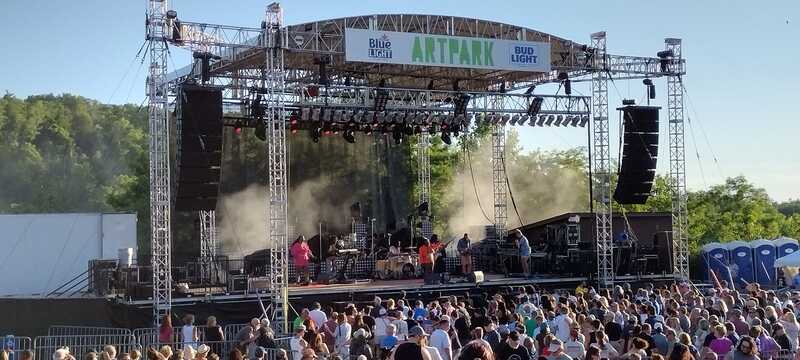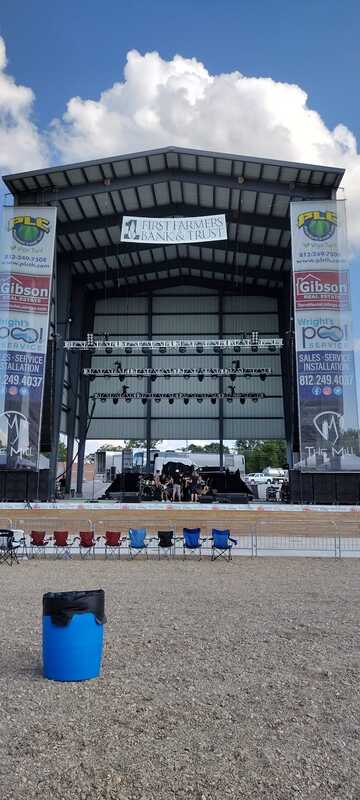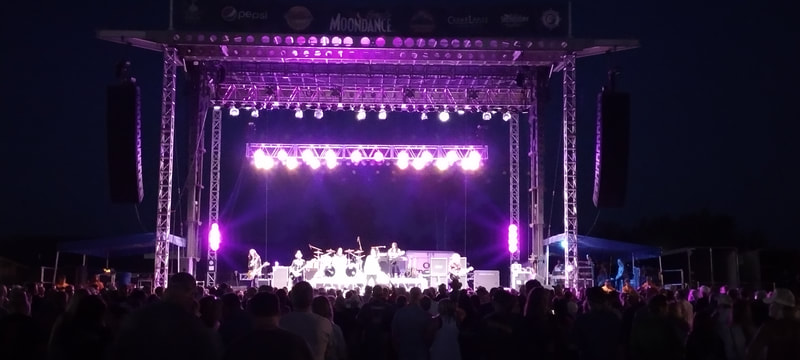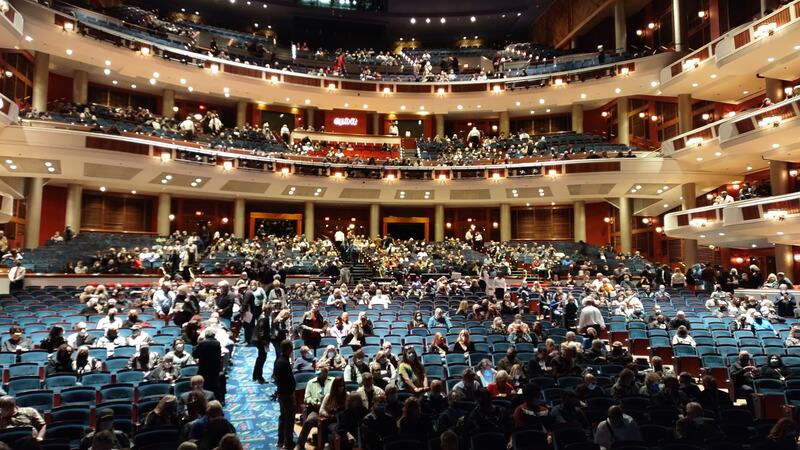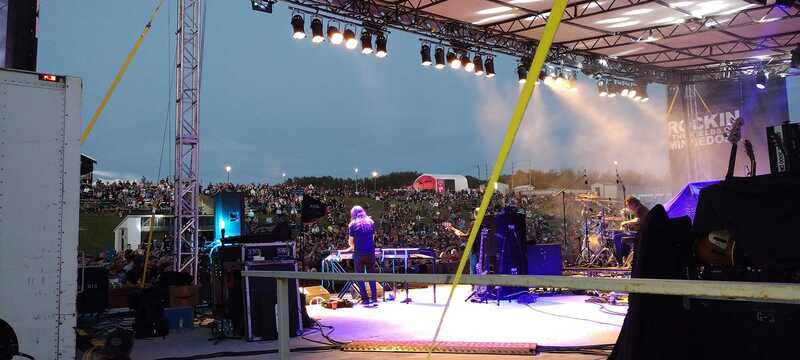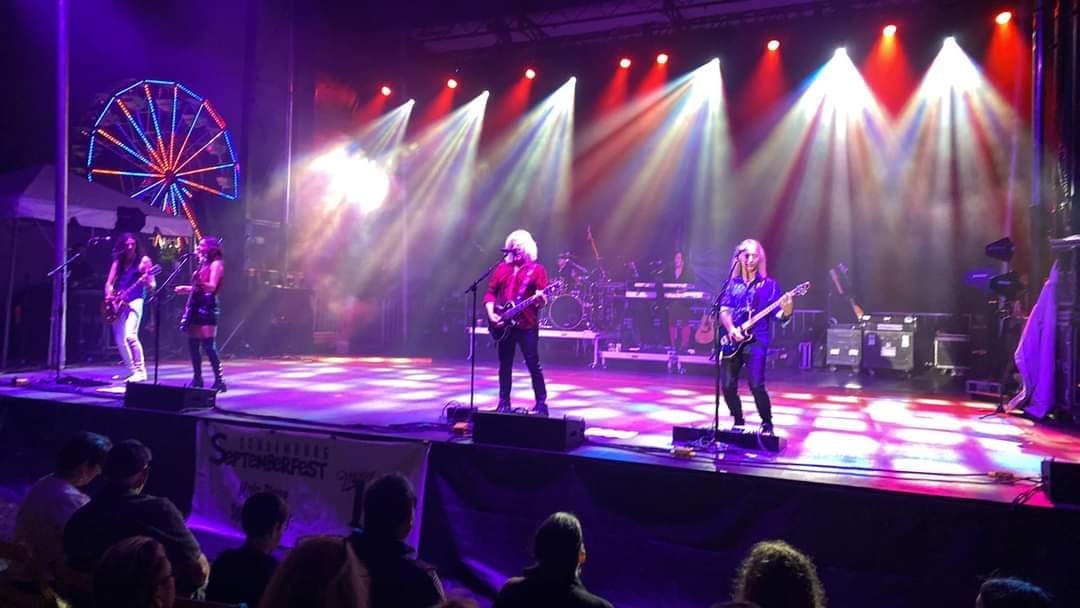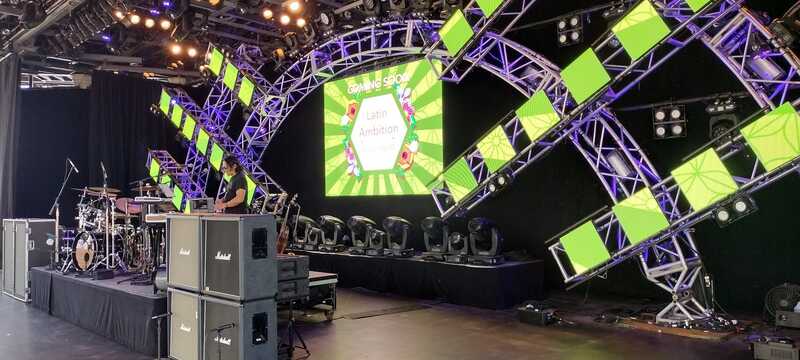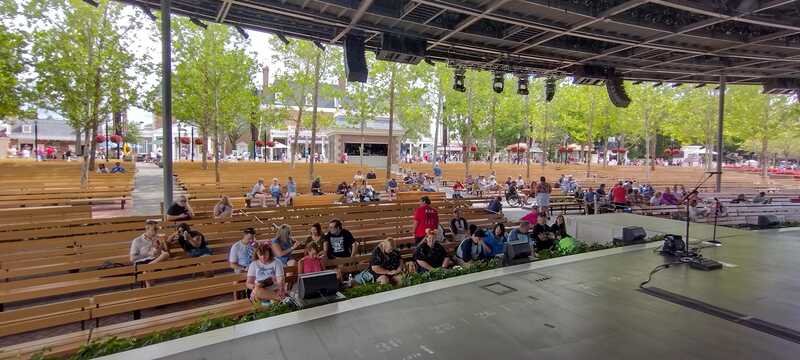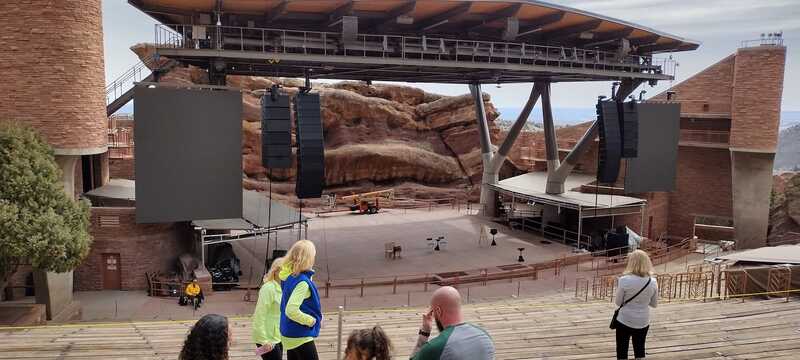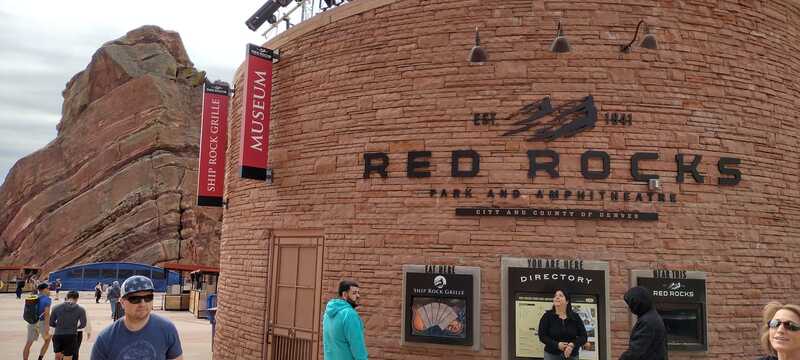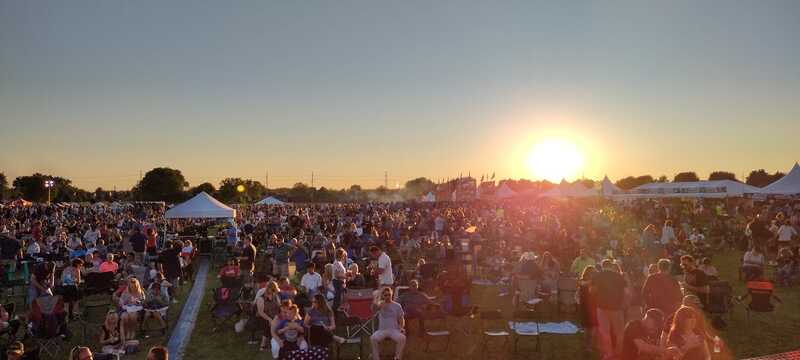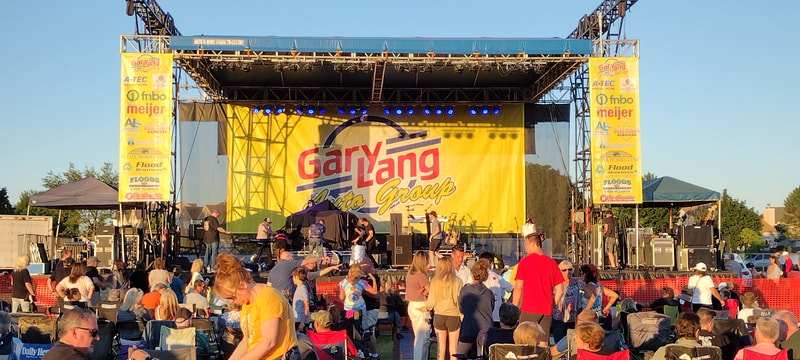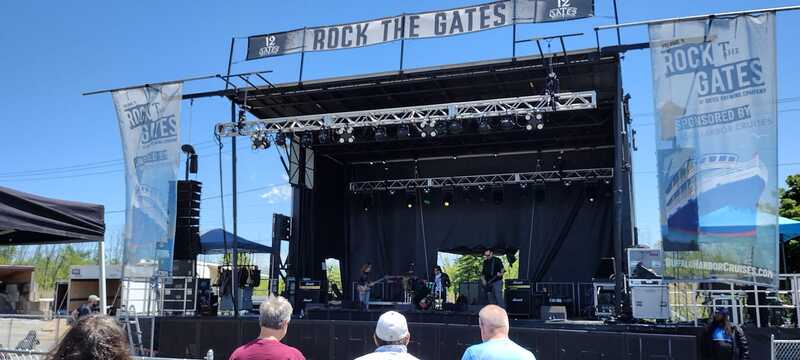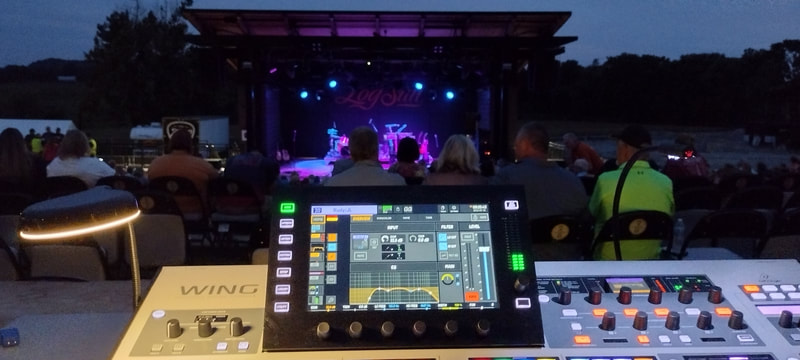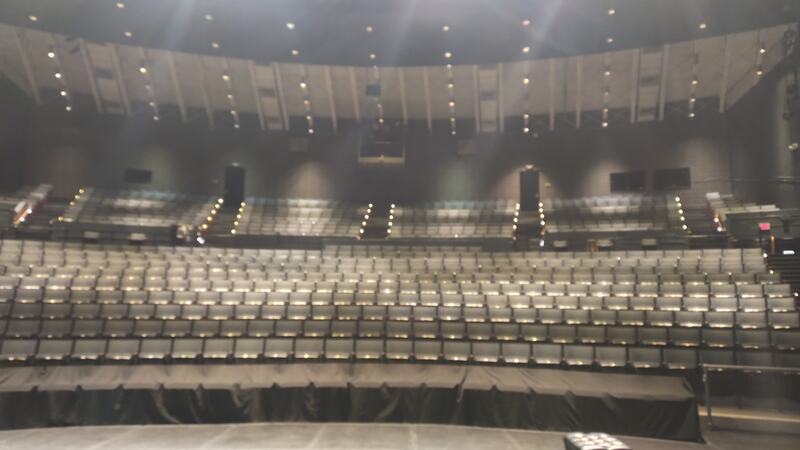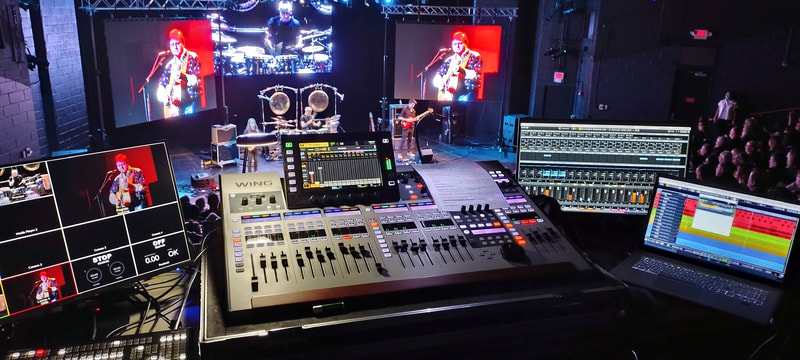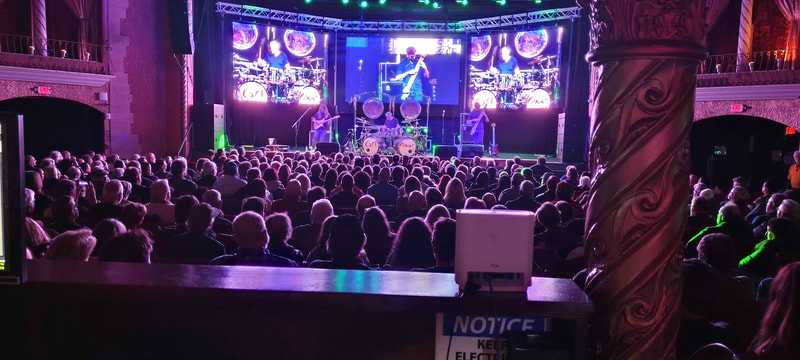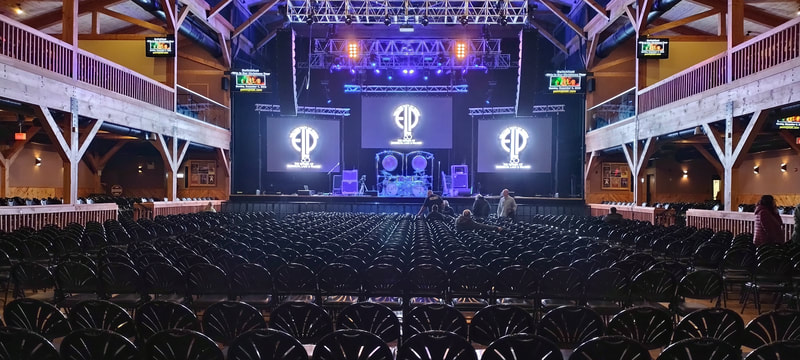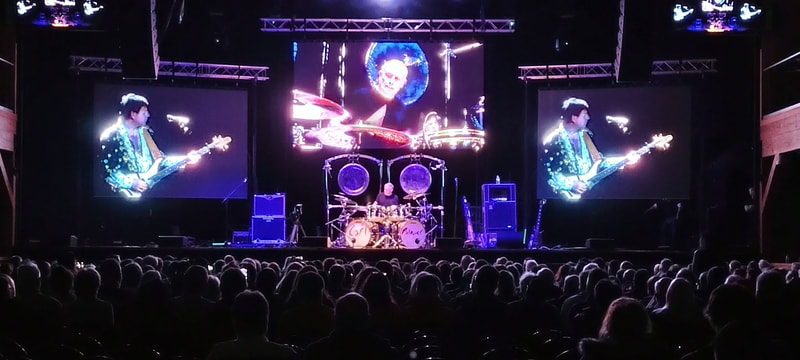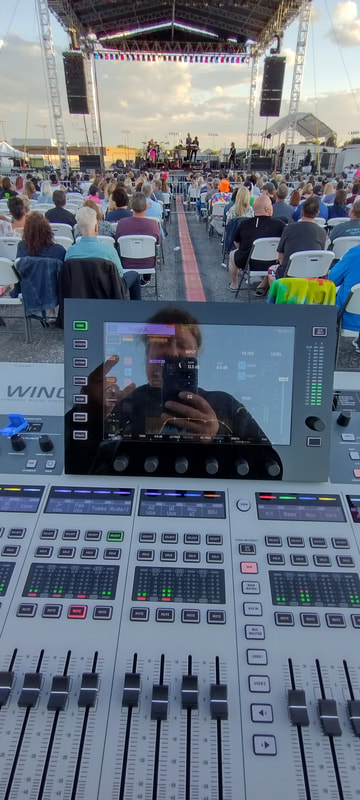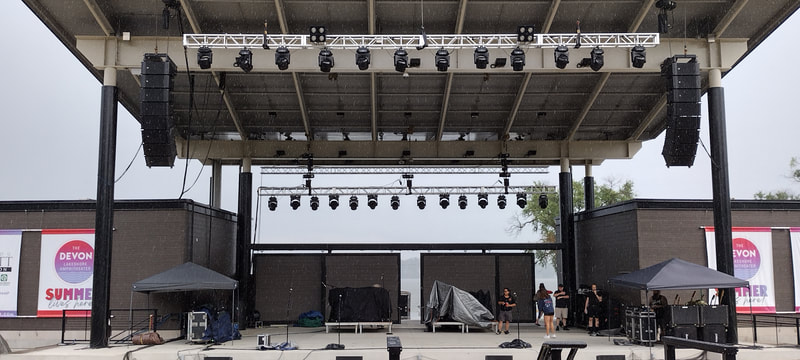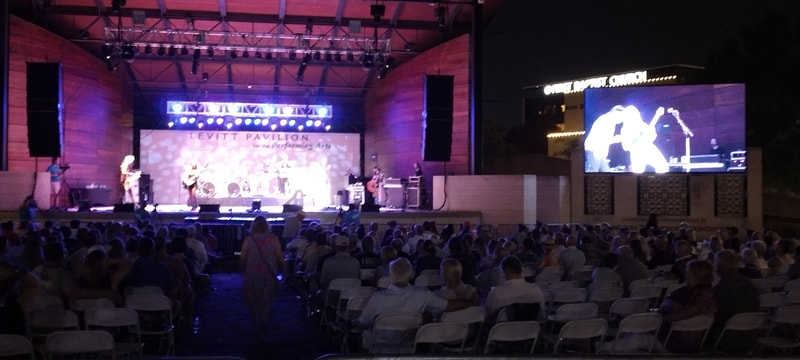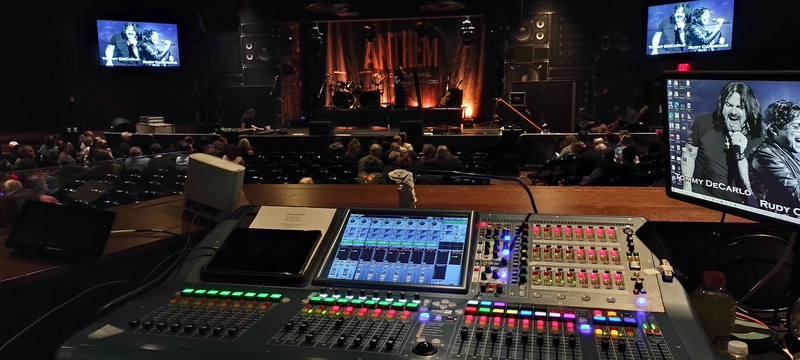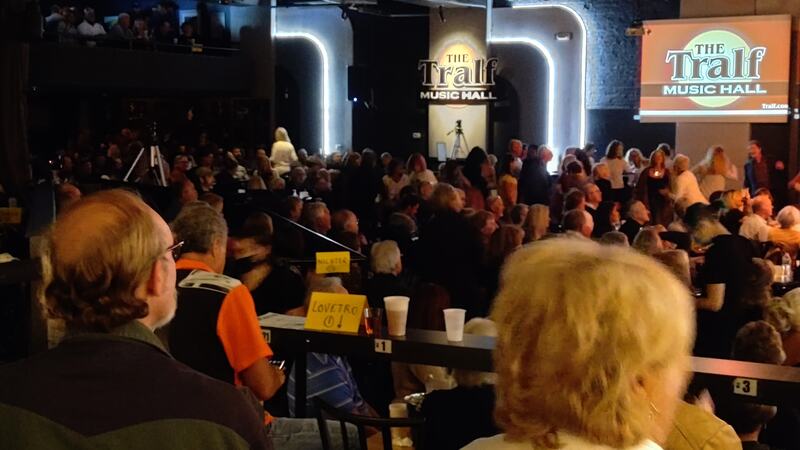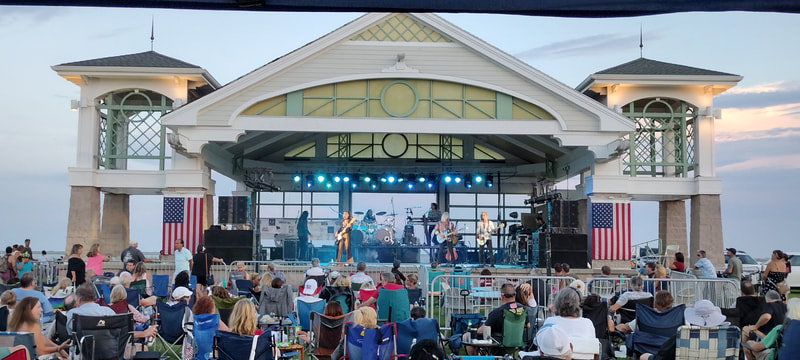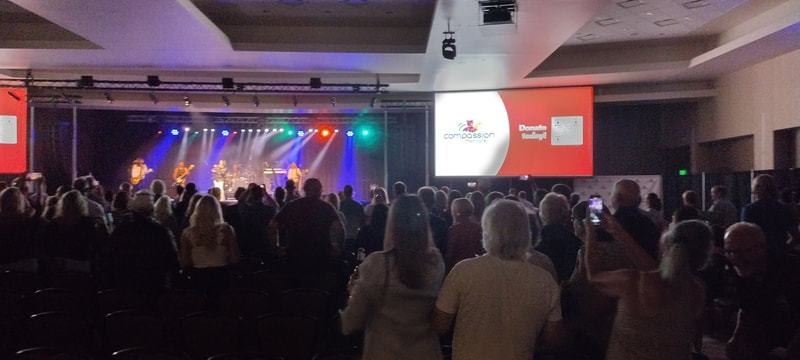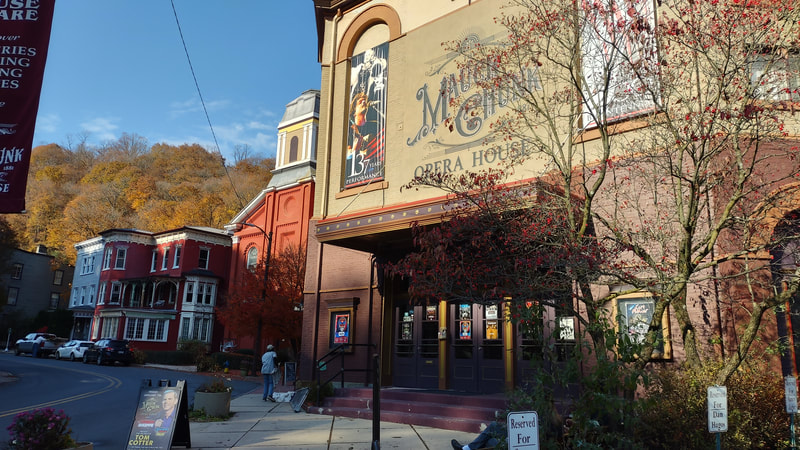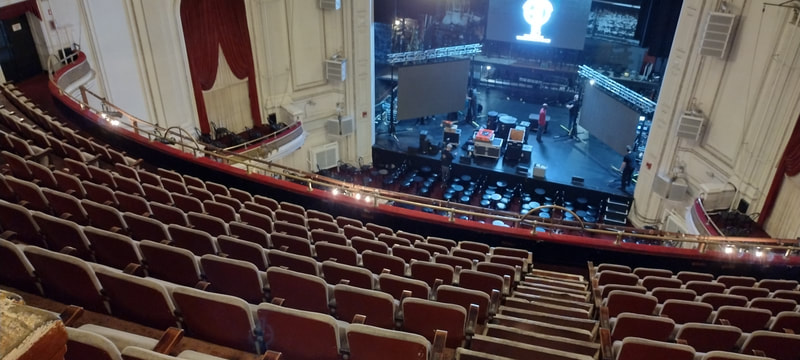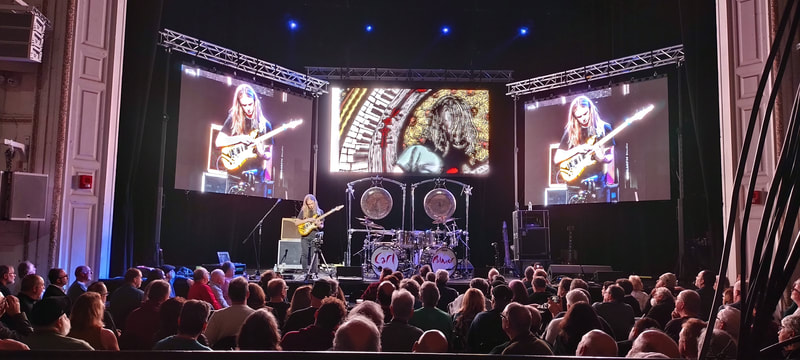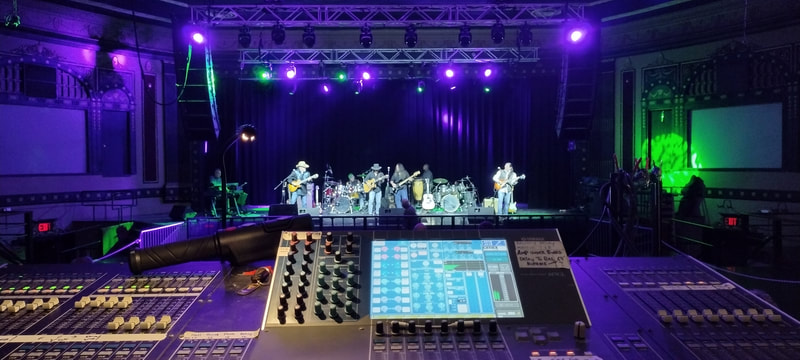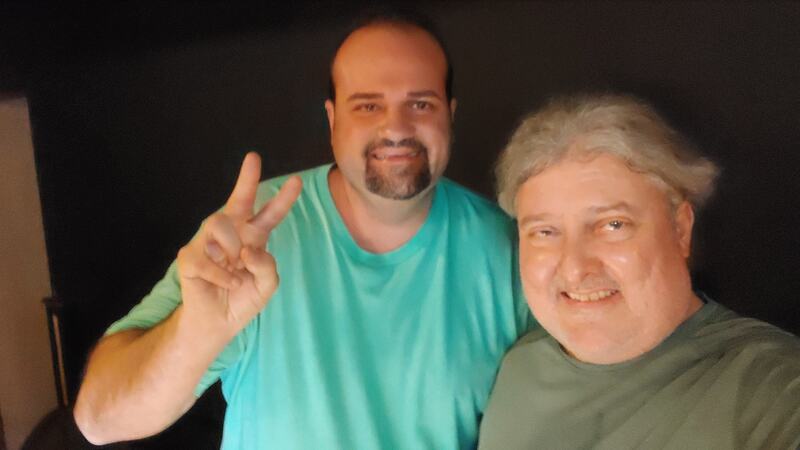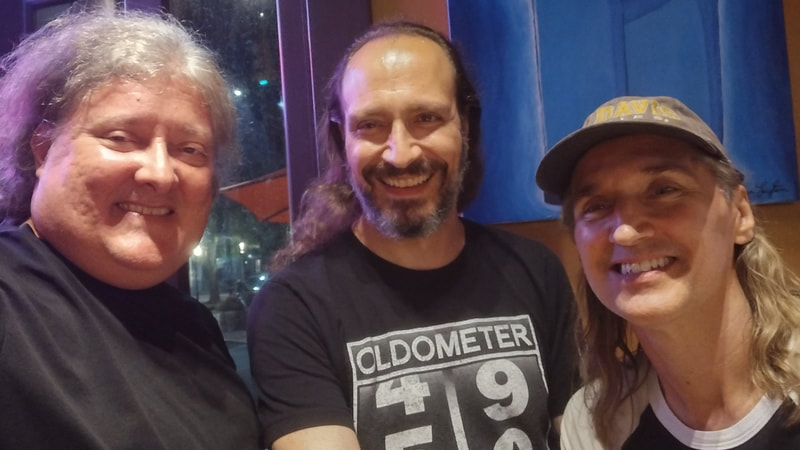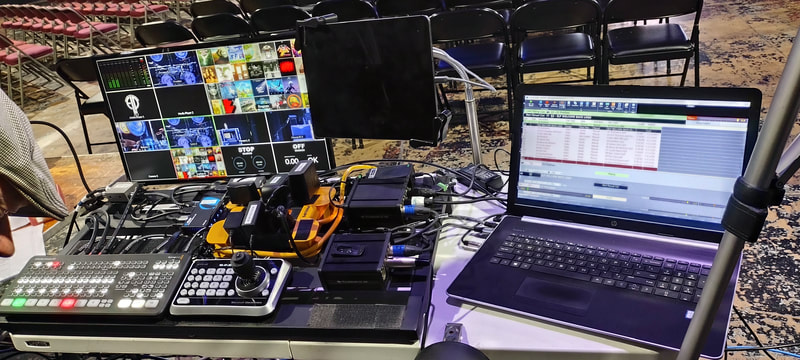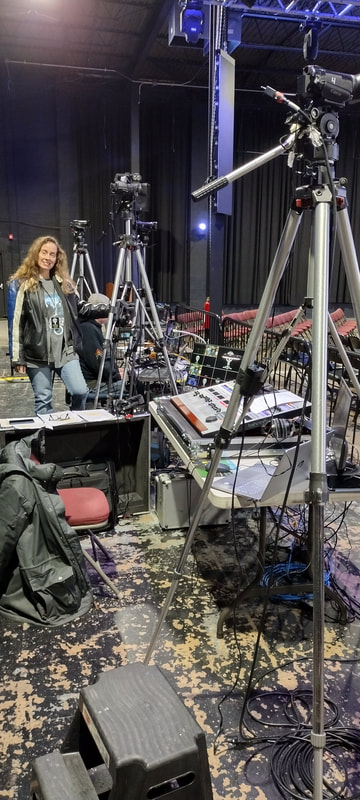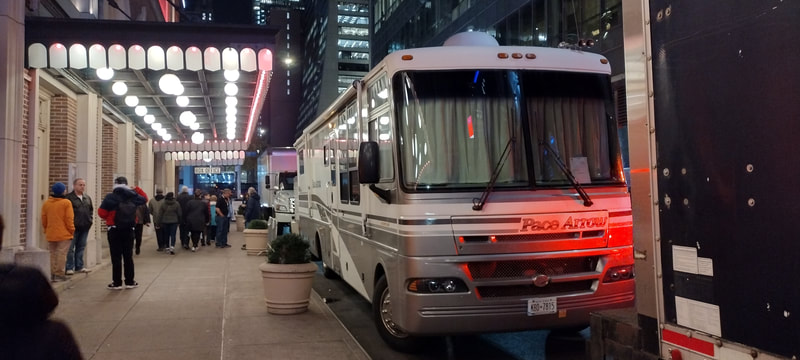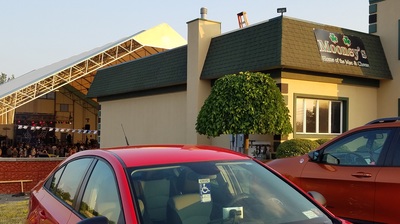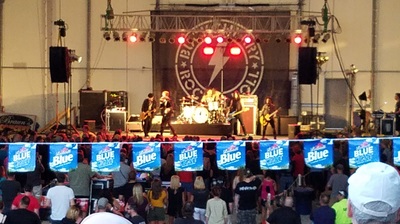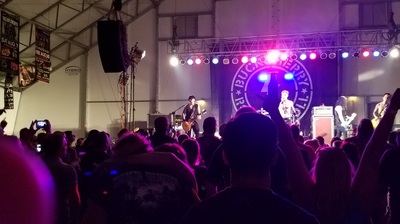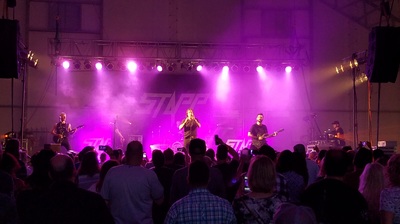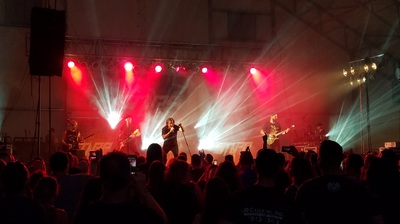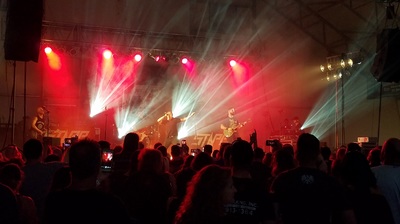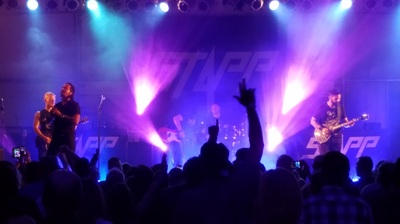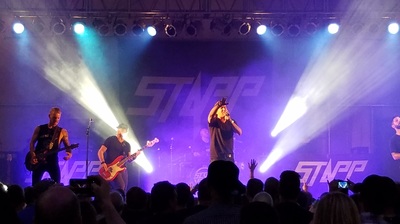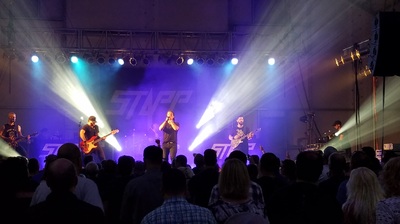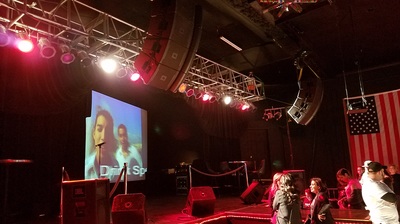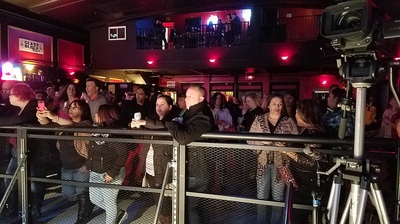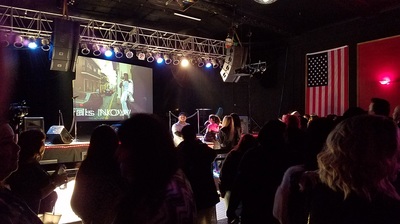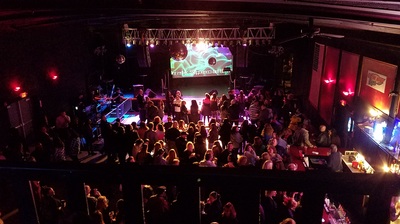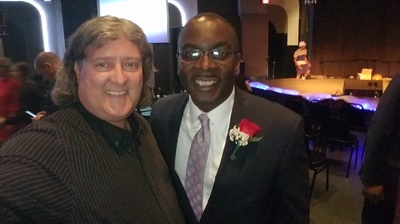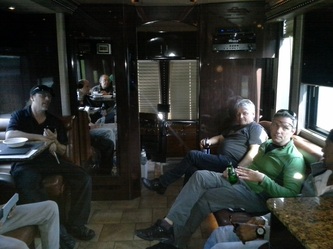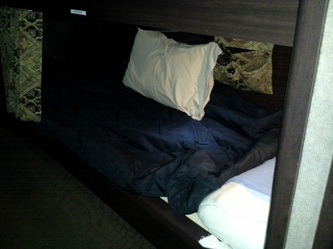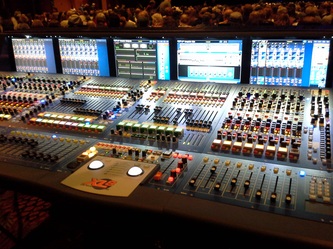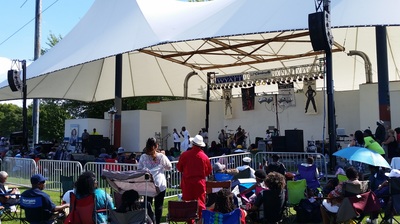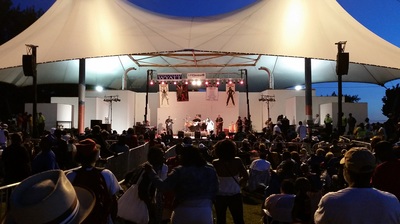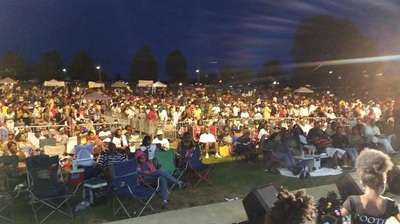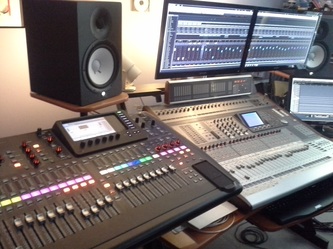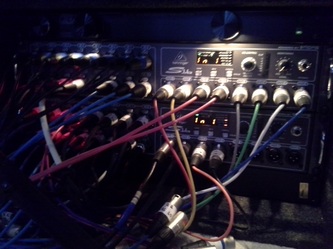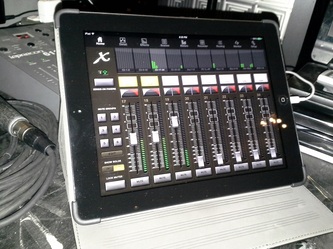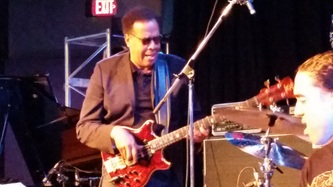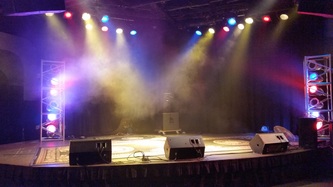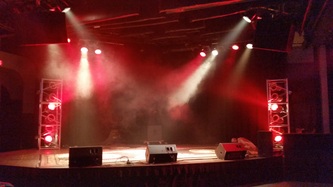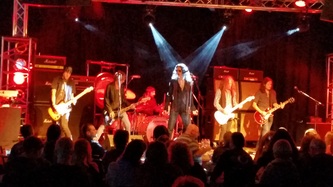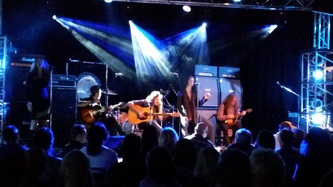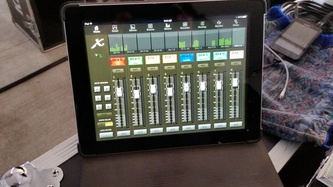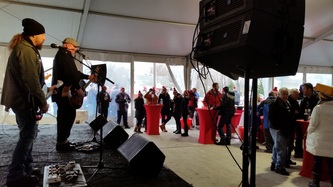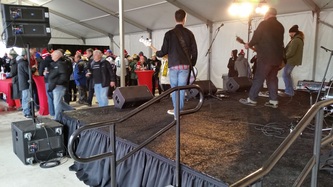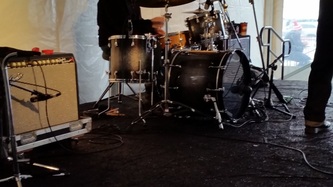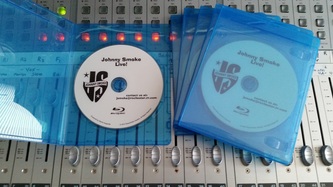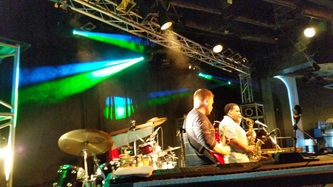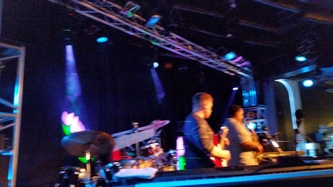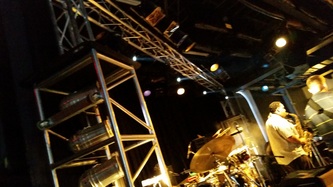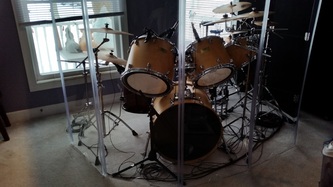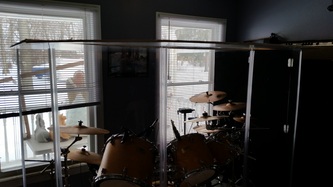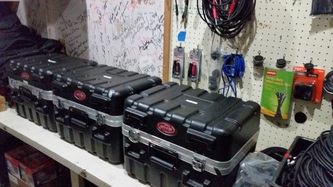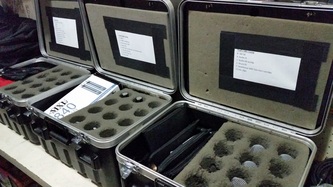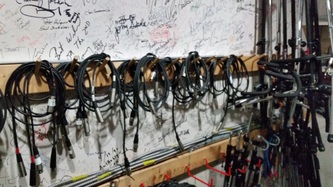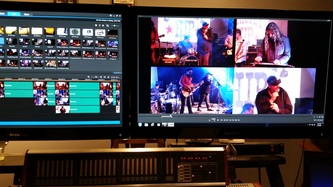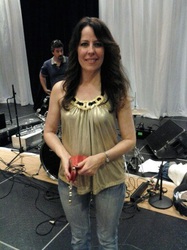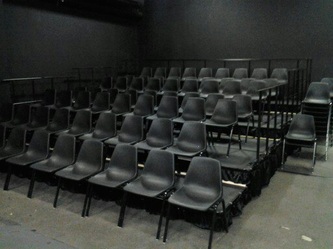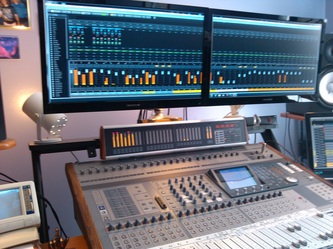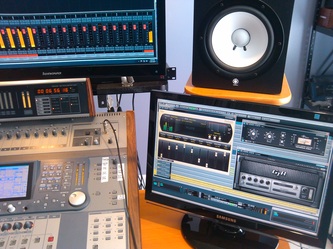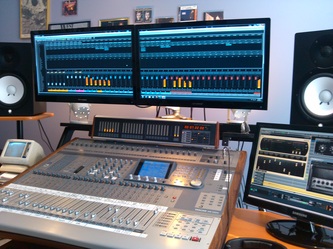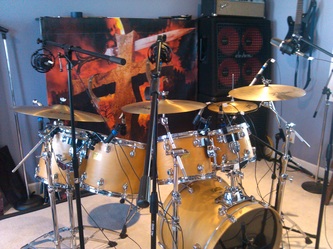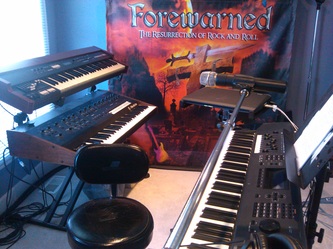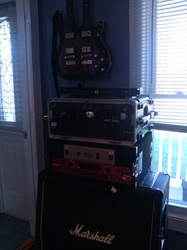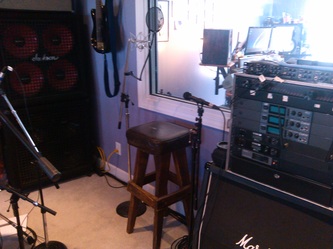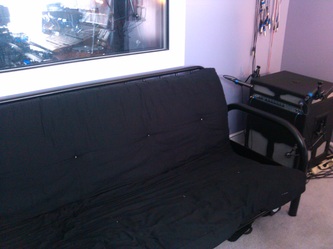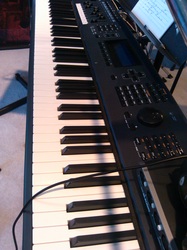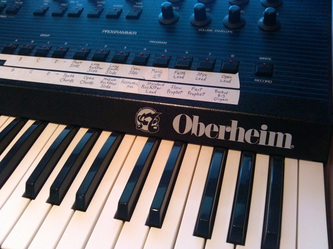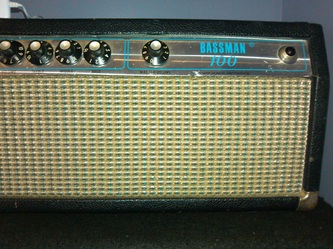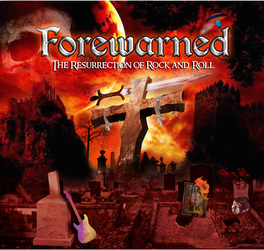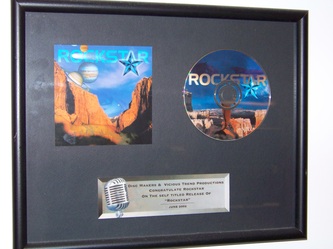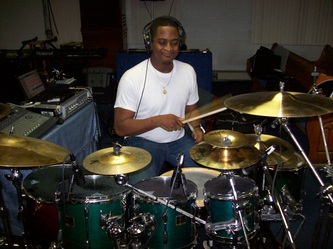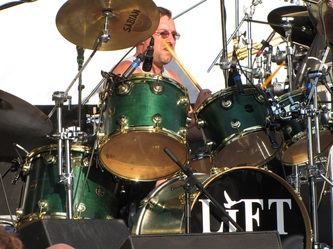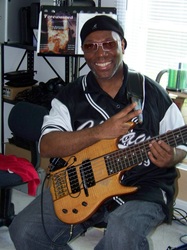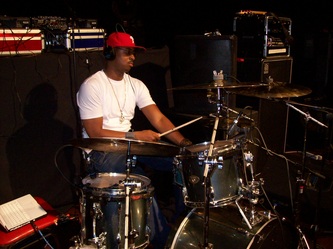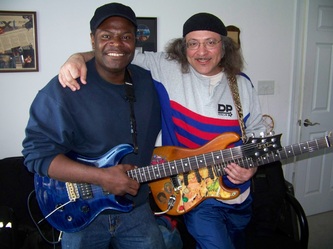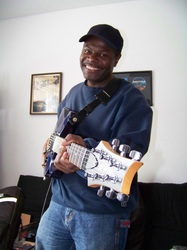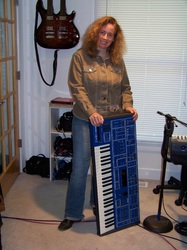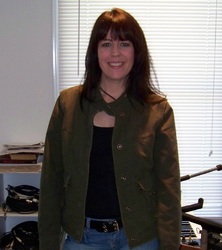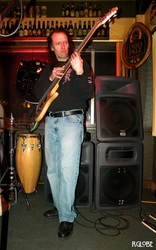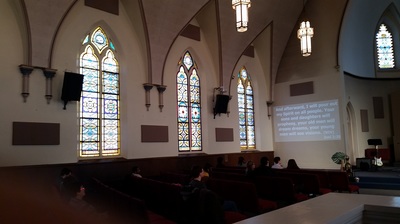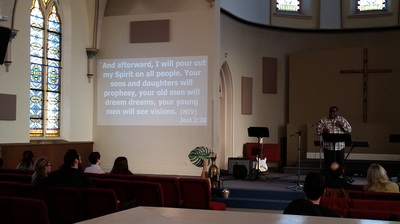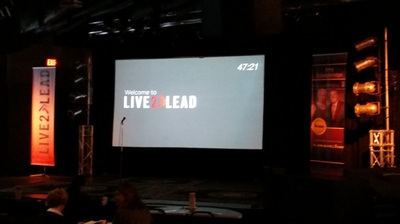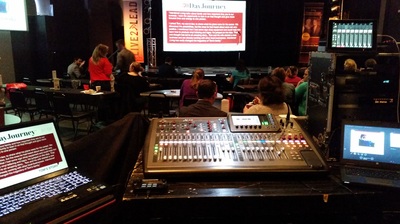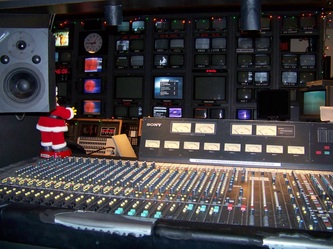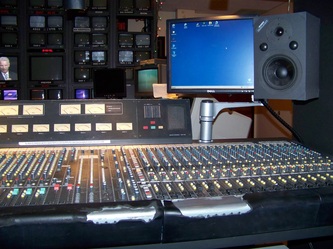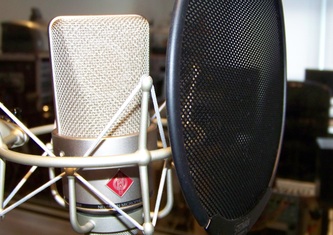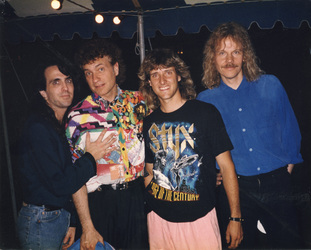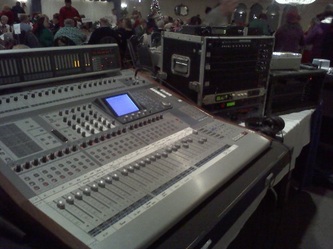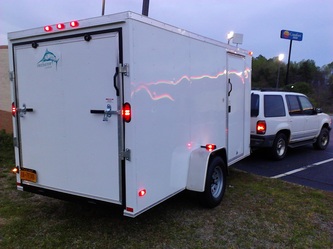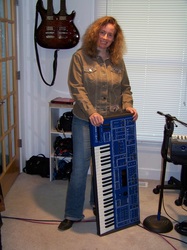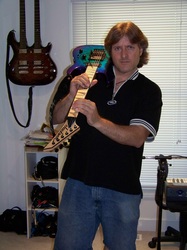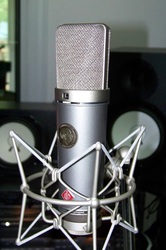Here's an interview that Steve did with Clive Young for Pro Sound News / Mix Magazine, all about the production behind the ELP tour. It was awarded the #9 interview of the year in their Top 20 Interviews.
Carl Palmer Brings Back ELP on the Road
ELP drummer Carl Palmer is carrying on the band’s legacy with a new tour that uses a savvy mix of multimedia and live performance.
By Clive Young ⋅
Published: 09/18/2023 ⋅ Updated: 01/08/2024
ELP drummer Carl Palmer is carrying on the band’s legacy with a new tour that uses a savvy mix of multimedia and live performance.
By Clive Young ⋅
Published: 09/18/2023 ⋅ Updated: 01/08/2024
Legendary ELP drummer Carl Palmer (left) and FOH/monitor/ video engineer Steve Supparits pause during soundcheck at the Epic Center in Green Bay, Wisconsin.
Buffalo, NY (September 18, 2023) — Throughout the 1970s, Emerson, Lake and Palmer wasn’t merely one of the biggest bands in Prog Rock—it was one of the biggest bands in the world, period. Formed in 1970 as one of the first Supergroups, ELP went on to sell more than 50 million records, sell out stadiums around the world and build a reputation for staggering, virtuoso musicianship before disbanding in 1979. While the trio reunited numerous times over the years, those opportunities came to an end in 2016 when both Keith Emerson (keyboards) and Greg Lake (vocals, bass, guitar) died only months apart. Now drummer Carl Palmer is carrying on the band’s legacy with a new tour--Welcome Back My Friends: The Return of Emerson Lake & Palmer—that uses a savvy mix of multimedia and live performance to present the group’s best-known works in a concert setting once again.
Conceived by Palmer and staged with the full support of his ELP bandmates’ estates, each show finds the drummer performing with guitarist Paul Bielatowicz and bassist Simon Fitzpatrick—and both Emerson and Lake via concert footage presented on video walls above the live band. More than half the evening features the live musicians locking in with performances culled from an ELP concert filmed at London’s Royal Albert Hall in October, 1992. Captured at the time with a full seven-camera shoot and a 24-channel multitrack recording, that performance from more than 30 years ago is now the bedrock that the current tour’s production is built upon.
Helping put Palmer’s old bandmates back on stage with him nightly is veteran engineer Steve Supparits of Resurrection Studios (Grand Island, New York). Supparits brings his own virtuosity to the proceedings as he simultaneously mixes front-of-house, handles monitors for the three live musicians, and runs switchers for two of the production’s three video walls. All that is accomplished in a compact FOH position that centers around a Behringer Wing 48-channel digital mixer, a laptop running Steinberg Nuendo, and a pair of Blackmagic Design ATEM Mini Extreme ISO video switchers.
Buffalo, NY (September 18, 2023) — Throughout the 1970s, Emerson, Lake and Palmer wasn’t merely one of the biggest bands in Prog Rock—it was one of the biggest bands in the world, period. Formed in 1970 as one of the first Supergroups, ELP went on to sell more than 50 million records, sell out stadiums around the world and build a reputation for staggering, virtuoso musicianship before disbanding in 1979. While the trio reunited numerous times over the years, those opportunities came to an end in 2016 when both Keith Emerson (keyboards) and Greg Lake (vocals, bass, guitar) died only months apart. Now drummer Carl Palmer is carrying on the band’s legacy with a new tour--Welcome Back My Friends: The Return of Emerson Lake & Palmer—that uses a savvy mix of multimedia and live performance to present the group’s best-known works in a concert setting once again.
Conceived by Palmer and staged with the full support of his ELP bandmates’ estates, each show finds the drummer performing with guitarist Paul Bielatowicz and bassist Simon Fitzpatrick—and both Emerson and Lake via concert footage presented on video walls above the live band. More than half the evening features the live musicians locking in with performances culled from an ELP concert filmed at London’s Royal Albert Hall in October, 1992. Captured at the time with a full seven-camera shoot and a 24-channel multitrack recording, that performance from more than 30 years ago is now the bedrock that the current tour’s production is built upon.
Helping put Palmer’s old bandmates back on stage with him nightly is veteran engineer Steve Supparits of Resurrection Studios (Grand Island, New York). Supparits brings his own virtuosity to the proceedings as he simultaneously mixes front-of-house, handles monitors for the three live musicians, and runs switchers for two of the production’s three video walls. All that is accomplished in a compact FOH position that centers around a Behringer Wing 48-channel digital mixer, a laptop running Steinberg Nuendo, and a pair of Blackmagic Design ATEM Mini Extreme ISO video switchers.
The compact FOH position centers around a Behringer Wing console, video playback via Steinberg Nuendo on a laptop, and a pair of Blackmagic Design ATEM Mini Extreme ISO video switchers.
“Carl dreams up the ideas, and then it’s my job to figure out how to make them work technically,” laughed Supparits. The first step was to take the 1992 concert material apart and bring it up to modern expectations. “We had the original footage, but it was transferred from VHS,” he explained. “We did a digital transfer, took the timecode off the footage and then cleaned it up—and now it looks wonderful; a lot of it looks like HD.”
The 1992 concert had all three members of ELP play across the stage with Palmer on stage left, so there were many instances where the footage featured only Lake at center stage and Emerson at stage right, whether in closeups or two-shots. Today, the Emerson and Lake material appears on the left and right video walls, while a center wall above Palmer’s drumkit displays the live band, captured through two stationary cameras, two additional cameras run by an operator and a robotic camera controlled by the tour’s video director, who simultaneously runs that wall’s switcher throughout the show.
Supparits opted to run the left and right video walls to keep everything in order, tech-wise. “I chose Steinberg Nuendo as the playback software because it processes video as well as audio,” he explained. “I’m using the VidPlayVST plug-in—a VST video player that can do 1080P off video and run just like an instrument plug-in on a digital workstation, so it doesn’t bog down the processor or lock up the computer. I actually run two instances of that on a lot of songs, like ‘Lucky Man’—I have two videos running concurrently through Nuendo that are synched up with the 24-track audio, so the video is going through my two switchers to the left and right walls. Throughout, you see Keith Emerson on one wall and Greg Lake on the other wall—and then I just mix it live as if they’re on stage.”
It is a true live mix, too, as all the original performances were recorded dry without effects: “I have 12 channels of Keith’s keyboards, two channels of bass, two channels of Greg’s guitars, and there’s individual vocals, so I can bring up Greg’s vocal in a venue and then compress it and use the reverb that suits best for the house. I mix it all with the band and obviously Carl plays live.”
“Carl dreams up the ideas, and then it’s my job to figure out how to make them work technically,” laughed Supparits. The first step was to take the 1992 concert material apart and bring it up to modern expectations. “We had the original footage, but it was transferred from VHS,” he explained. “We did a digital transfer, took the timecode off the footage and then cleaned it up—and now it looks wonderful; a lot of it looks like HD.”
The 1992 concert had all three members of ELP play across the stage with Palmer on stage left, so there were many instances where the footage featured only Lake at center stage and Emerson at stage right, whether in closeups or two-shots. Today, the Emerson and Lake material appears on the left and right video walls, while a center wall above Palmer’s drumkit displays the live band, captured through two stationary cameras, two additional cameras run by an operator and a robotic camera controlled by the tour’s video director, who simultaneously runs that wall’s switcher throughout the show.
Supparits opted to run the left and right video walls to keep everything in order, tech-wise. “I chose Steinberg Nuendo as the playback software because it processes video as well as audio,” he explained. “I’m using the VidPlayVST plug-in—a VST video player that can do 1080P off video and run just like an instrument plug-in on a digital workstation, so it doesn’t bog down the processor or lock up the computer. I actually run two instances of that on a lot of songs, like ‘Lucky Man’—I have two videos running concurrently through Nuendo that are synched up with the 24-track audio, so the video is going through my two switchers to the left and right walls. Throughout, you see Keith Emerson on one wall and Greg Lake on the other wall—and then I just mix it live as if they’re on stage.”
It is a true live mix, too, as all the original performances were recorded dry without effects: “I have 12 channels of Keith’s keyboards, two channels of bass, two channels of Greg’s guitars, and there’s individual vocals, so I can bring up Greg’s vocal in a venue and then compress it and use the reverb that suits best for the house. I mix it all with the band and obviously Carl plays live.”
Throughout the show, left and right video walls play back vintage footage of Keith Emerson and Greg Lake, while the center wall features live footage from five cameras onstage.
In all, Supparits oversees 54 inputs, with 24 from the video tracks and 30 inputs from the stage—16 of which are from Palmer’s extensive drumkit—plus 10 channels of stereo effects as needed. Palmer’s kit is captured with Sennheiser e 604s used above and below the two snares, as well as on each of the gongs. Meanwhile, Audix MicroDs are on all the toms, while the company’s condensers can be found on the overheads, hi-hats and ride cymbal, and each kick drum gets a single D6. “I’ve never been one of those guys that needs two mics on every kick,” said Supparits. “Nowadays with subs on a separate feed, I find it so much easier just to dial your bass drum into the top part of the P.A. for the click you want, add it to the subs in the venue for the punch, and away you go with one mic.”
The guitar is picked up with a Sennheiser e 609 hung off the cabinet, and the same goes for the bass, the results of which are mixed with the bass DI. “Both guys play a lot of synthesizer parts to emulate what Keith Emerson did,” said Supparits, “so there’s a bass synthesizer played through pedals, while the guitar player goes through a laptop, so he can create any synthesizer sound while he’s playing his guitar, and that’s a stereo direct. Along with those, the bass player has a 10-string Chapman Stick that is a wonderful sound, so we have quite a variety of sound to work with.”
All those sounds culminate in an ELP concert experience that, across the three musicians on stage and eight crew members in tow, is presented with sincerity and commitment—and the fans sense that, night after night. “Carl’s very driven as far as wanting to put on a really good show and give the audience not only visuals, but the sounds that they’re expecting to hear,” said Supparits. “On the way out, half the people come over crying, just thanking us for doing this and saying how wonderful it was to see the guys again.” With a year’s worth of shows across the U.S., Japan and Europe already lined up, further opportunities to make that connection are in store.
In all, Supparits oversees 54 inputs, with 24 from the video tracks and 30 inputs from the stage—16 of which are from Palmer’s extensive drumkit—plus 10 channels of stereo effects as needed. Palmer’s kit is captured with Sennheiser e 604s used above and below the two snares, as well as on each of the gongs. Meanwhile, Audix MicroDs are on all the toms, while the company’s condensers can be found on the overheads, hi-hats and ride cymbal, and each kick drum gets a single D6. “I’ve never been one of those guys that needs two mics on every kick,” said Supparits. “Nowadays with subs on a separate feed, I find it so much easier just to dial your bass drum into the top part of the P.A. for the click you want, add it to the subs in the venue for the punch, and away you go with one mic.”
The guitar is picked up with a Sennheiser e 609 hung off the cabinet, and the same goes for the bass, the results of which are mixed with the bass DI. “Both guys play a lot of synthesizer parts to emulate what Keith Emerson did,” said Supparits, “so there’s a bass synthesizer played through pedals, while the guitar player goes through a laptop, so he can create any synthesizer sound while he’s playing his guitar, and that’s a stereo direct. Along with those, the bass player has a 10-string Chapman Stick that is a wonderful sound, so we have quite a variety of sound to work with.”
All those sounds culminate in an ELP concert experience that, across the three musicians on stage and eight crew members in tow, is presented with sincerity and commitment—and the fans sense that, night after night. “Carl’s very driven as far as wanting to put on a really good show and give the audience not only visuals, but the sounds that they’re expecting to hear,” said Supparits. “On the way out, half the people come over crying, just thanking us for doing this and saying how wonderful it was to see the guys again.” With a year’s worth of shows across the U.S., Japan and Europe already lined up, further opportunities to make that connection are in store.
Clive Young
Clive Young is the co-editor of Mix Magazine and editor of MixOnline.com. He was the editor in chief of Pro Sound News (Future's U.S. Magazine of the Year - 2019) and is a four-time nominee for "Best Range Of Work By A Single Author" in the annual Neal Awards. He is the author of two books, "Crank It Up: Live Sound Secrets of the Top Tour Engineers," and "Homemade Hollywood: Fans Behind The Camera." Additionally, he has spoken at nearly 500 libraries, universities, museums, academic symposiums and conventions. Young earned an MFA in Creative Writing from Hofstra University and is an adjunct professor at St. Joseph’s University New York.
Clive Young is the co-editor of Mix Magazine and editor of MixOnline.com. He was the editor in chief of Pro Sound News (Future's U.S. Magazine of the Year - 2019) and is a four-time nominee for "Best Range Of Work By A Single Author" in the annual Neal Awards. He is the author of two books, "Crank It Up: Live Sound Secrets of the Top Tour Engineers," and "Homemade Hollywood: Fans Behind The Camera." Additionally, he has spoken at nearly 500 libraries, universities, museums, academic symposiums and conventions. Young earned an MFA in Creative Writing from Hofstra University and is an adjunct professor at St. Joseph’s University New York.
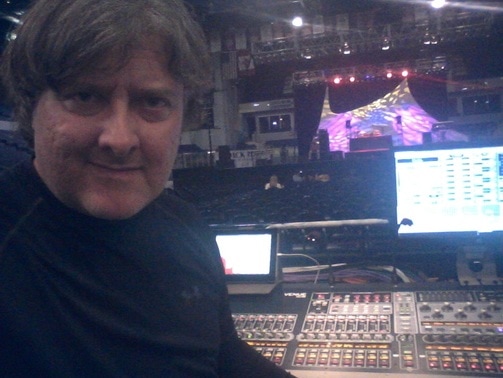 Steve doing FOH at an Arena show,
manning a V-Dosc rig and an SC48
Steve doing FOH at an Arena show,
manning a V-Dosc rig and an SC48
Steve Supparits
Chief Engineer
Steve has been working in the Live Entertainment industry for over 3 decades. Getting his start at Melody Fair in the 1980’s, Steve learned Live Audio Engineering and studied Audio Engineering in college. Steve has done Production and Live Sound for thousands of National Recording Artists, and toured all around the world many times. Yes, that sounds like a lot, but averaging 150 shows per year for 30+ years puts Steve at over 5000 live performances since he started mixing in 1987. Along with Melody Fair In the 1990's, he ran the Concert Department at Indigo Productions where he designed concert systems and trained audio engineers, as well as continuing to do sound for local, regional, and national artists, including everyone from Wayne Newton, Don Rickles, and Bill Cosby, to Martina McBride, Joe Walsh, Jack Wagner, Ray Charles, and Lynyrd Skynyrd just to name a few.
Steve went to sea in 1997-1998 as the Head Sound and Light Technician for Royal Caribbean Cruise Lines, where he was responsible for helping the cruise line enhance the sound and lighting systems throughout their fleet, as well as operating the sound system in the main venue of the fleet’s flagship “The Rhapsody of the Seas”. Steve continued to mix live shows for National Recording Artists, and started doing Live and Studio recordings for them as well.
After leaving Royal Caribbean (even though he was offered a great career there) Steve started touring Nationally and went on the road as Tour Manager and FOH Audio Engineer for Peter Noone and Herman’s Hermits, and has toured with International Artists like Emerson, Lake and Palmer, Tommy DeCarlo – the singer of Boston, the Gypsy Kings, and Antonio Sanchez.
In between tours, Steve also started Resurrection Studios, and Steve became the Audio Engineer for the Country Music Hall of Fame Ramblin’ Lou Schriver’s Ramblin’ Lou Family Band (a position he’s done with the R.L. family for over 20 years). Steve continued to do studio and Live Recordings, as well as Mastering, for National, Regional, and Local Artists, including Clint Holmes, Frankie Avalon (Sr, and Jr.), Ramblin’ Lou Schriver, Kenny Hawkins, Glenn Jones, Allen Toussaint, the Stone City Band, Kathy Carr, George Puleo, Sam Noto, Forewarned, Carl Palmer, ELP and hundreds more. Steve has at one time or another, worked with just about every musician in WNY.
Steve got married in 2003 and decided to stop touring and stay in WNY to raise a family. Besides a flourishing studio, he was also a Lead Audio Engineer at the Seneca Casinos from 2008-2014, where Steve continued to do sound and production for hundreds of National Artists, including Styx, The Scintas, Cheap Trick, Dennis DeYoung, Don Felder, Howie Mandel, Stevie Nicks, Diamond Rio, MeatLoaf, Kenny Rogers, and many more.
Steve helped the Senecas become the first casino in NY to institute digital mixing and control of a sound board from an iPad, enabling the engineer to walk around the house while mixing the band, keeping the typical sound board hidden backstage. Steve has also been a freelance engineer and is used routinely by Indigo Productions, Advanced Production Group and Audio Images, three of the largest Concert System providers in the Northeast.
Through Resurrection Studios, Steve has done installations and production for the African-American Cultural Center, The Tralf Music Hall, Home City Church, Mooney’s/Braun’s Concert Cove, The Showplace Theater, the Buffalo Funk Fest at LaSalle Park, and more, working with artists like Scott Stapp, Buckcherry, Molly Hatchet, LA Sky and the Rick James Stone City Band, The Temptations, The Whispers, and more.
At the Tralf Music Hall, Resurrection Studios has done full production since 2014, including Sound, Lighting, and Video Projection, as well as Multi-camera HD Video shoots and editing, and in 2014, Steve implemented full digital mixing, with FOH and monitors being mixed off of an iPad that controls the sound board, and every zone in the venue. At the Tralf, an idea between Steve and Tom Barone to mix bands in 7.1 Surround Sound became a reality. Steve designed, installed and operated the first concert venue in North America with actual 7.1 Surround mixing of Live events and concerts (This is not a processor that simulates a surround mix. There are controllable aux sends going to every speaker in the 7.1 system and the engineer can decide what instruments and vocals go anywhere in the mix that they want). National and regional touring acts have been raving about the production quality they experience at the Tralf Music Hall, and have not found a comparable venue in the U.S.
Now that Steve’s kids are grown, he resumed touring in 2019 and went on the road with The Gypsy Kings, Antonio Sanchez, and spent the next 4 years doing multiple tours with Carl Palmer’s ELP Legacy. Steve spent most of 2022 touring with the Singer of Boston – Tommy DeCarlo, as his FOH Engineer and Production Manager, while helping to produce and launch the highly successful tour, The Return of Emerson, Lake and Palmer in November of 2022. This was a tour that Carl Palmer and Steve had been working on since 2020, but had gotten delayed by the Covid-19 Pandemic.
In addition to FOH Audio, Steve is the Production Manager, and he supplies the tour with three giant video walls and an HD video crew, where he uses video of Keith Emerson and Greg Lake from a performance in the 1990’s on the walls, linked to a multitrack recording on his laptop, and he mixes the audio from Keith, Greg and their instruments into his soundboard on individual channels, along with the live inputs from Carl Palmer and the band on stage. This has never been done before for an entire performance. The tour has been a resounding success with raves about the technical quality of the show! Steve was out through 2025 taking The Return of Emerson, Lake and Palmer around the world, including sold out shows in the USA, Canada, and Japan. An Interview that Steve did with Clive Young for Pro Sound News / Mix Magazine was awarded the #9 interview of the year in their Top 20 Interviews.
Steve also continues to do Live audio mixing, as well as HD video camera shoots, with full multitrack recording of audio, including Studio remixing and Mastering of concerts and CD recordings, Studio audio projects, and outside video shoots. In 2025, Steve will be producing the Live Blu-ray of An Evening With Emerson, Lake and Palmer for commercial release. Through all of his work, Steve has become a staple in the industry for musicians in Buffalo and Western New York, and it’s rare to find a musician in Buffalo that doesn’t know him.
When asked about his work, Steve said “It’s funny, because for a Live Audio Engineer, your body of work disappears the moment the show ends. The people that appreciate what you do the most are the musicians whose sound and performance you help to elevate, and audience members that know something about how the production works. Thank God that portable digital recording became available in the 1990’s. Even though a lot of artists refuse to be recorded live, there are many who now appreciate having their shows cataloged and later released as live compilations, allowing guys like me to have some of our work stored for our own legacy. In 2014 I gave a multi-track feed to Carl Palmer, and out of all of his shows on that tour, he chose to release his entire "ELP Legacy" CD from our singular show at the Tralf! I still have the stereo board mix of the show for my own enjoyment :)”
Chief Engineer
Steve has been working in the Live Entertainment industry for over 3 decades. Getting his start at Melody Fair in the 1980’s, Steve learned Live Audio Engineering and studied Audio Engineering in college. Steve has done Production and Live Sound for thousands of National Recording Artists, and toured all around the world many times. Yes, that sounds like a lot, but averaging 150 shows per year for 30+ years puts Steve at over 5000 live performances since he started mixing in 1987. Along with Melody Fair In the 1990's, he ran the Concert Department at Indigo Productions where he designed concert systems and trained audio engineers, as well as continuing to do sound for local, regional, and national artists, including everyone from Wayne Newton, Don Rickles, and Bill Cosby, to Martina McBride, Joe Walsh, Jack Wagner, Ray Charles, and Lynyrd Skynyrd just to name a few.
Steve went to sea in 1997-1998 as the Head Sound and Light Technician for Royal Caribbean Cruise Lines, where he was responsible for helping the cruise line enhance the sound and lighting systems throughout their fleet, as well as operating the sound system in the main venue of the fleet’s flagship “The Rhapsody of the Seas”. Steve continued to mix live shows for National Recording Artists, and started doing Live and Studio recordings for them as well.
After leaving Royal Caribbean (even though he was offered a great career there) Steve started touring Nationally and went on the road as Tour Manager and FOH Audio Engineer for Peter Noone and Herman’s Hermits, and has toured with International Artists like Emerson, Lake and Palmer, Tommy DeCarlo – the singer of Boston, the Gypsy Kings, and Antonio Sanchez.
In between tours, Steve also started Resurrection Studios, and Steve became the Audio Engineer for the Country Music Hall of Fame Ramblin’ Lou Schriver’s Ramblin’ Lou Family Band (a position he’s done with the R.L. family for over 20 years). Steve continued to do studio and Live Recordings, as well as Mastering, for National, Regional, and Local Artists, including Clint Holmes, Frankie Avalon (Sr, and Jr.), Ramblin’ Lou Schriver, Kenny Hawkins, Glenn Jones, Allen Toussaint, the Stone City Band, Kathy Carr, George Puleo, Sam Noto, Forewarned, Carl Palmer, ELP and hundreds more. Steve has at one time or another, worked with just about every musician in WNY.
Steve got married in 2003 and decided to stop touring and stay in WNY to raise a family. Besides a flourishing studio, he was also a Lead Audio Engineer at the Seneca Casinos from 2008-2014, where Steve continued to do sound and production for hundreds of National Artists, including Styx, The Scintas, Cheap Trick, Dennis DeYoung, Don Felder, Howie Mandel, Stevie Nicks, Diamond Rio, MeatLoaf, Kenny Rogers, and many more.
Steve helped the Senecas become the first casino in NY to institute digital mixing and control of a sound board from an iPad, enabling the engineer to walk around the house while mixing the band, keeping the typical sound board hidden backstage. Steve has also been a freelance engineer and is used routinely by Indigo Productions, Advanced Production Group and Audio Images, three of the largest Concert System providers in the Northeast.
Through Resurrection Studios, Steve has done installations and production for the African-American Cultural Center, The Tralf Music Hall, Home City Church, Mooney’s/Braun’s Concert Cove, The Showplace Theater, the Buffalo Funk Fest at LaSalle Park, and more, working with artists like Scott Stapp, Buckcherry, Molly Hatchet, LA Sky and the Rick James Stone City Band, The Temptations, The Whispers, and more.
At the Tralf Music Hall, Resurrection Studios has done full production since 2014, including Sound, Lighting, and Video Projection, as well as Multi-camera HD Video shoots and editing, and in 2014, Steve implemented full digital mixing, with FOH and monitors being mixed off of an iPad that controls the sound board, and every zone in the venue. At the Tralf, an idea between Steve and Tom Barone to mix bands in 7.1 Surround Sound became a reality. Steve designed, installed and operated the first concert venue in North America with actual 7.1 Surround mixing of Live events and concerts (This is not a processor that simulates a surround mix. There are controllable aux sends going to every speaker in the 7.1 system and the engineer can decide what instruments and vocals go anywhere in the mix that they want). National and regional touring acts have been raving about the production quality they experience at the Tralf Music Hall, and have not found a comparable venue in the U.S.
Now that Steve’s kids are grown, he resumed touring in 2019 and went on the road with The Gypsy Kings, Antonio Sanchez, and spent the next 4 years doing multiple tours with Carl Palmer’s ELP Legacy. Steve spent most of 2022 touring with the Singer of Boston – Tommy DeCarlo, as his FOH Engineer and Production Manager, while helping to produce and launch the highly successful tour, The Return of Emerson, Lake and Palmer in November of 2022. This was a tour that Carl Palmer and Steve had been working on since 2020, but had gotten delayed by the Covid-19 Pandemic.
In addition to FOH Audio, Steve is the Production Manager, and he supplies the tour with three giant video walls and an HD video crew, where he uses video of Keith Emerson and Greg Lake from a performance in the 1990’s on the walls, linked to a multitrack recording on his laptop, and he mixes the audio from Keith, Greg and their instruments into his soundboard on individual channels, along with the live inputs from Carl Palmer and the band on stage. This has never been done before for an entire performance. The tour has been a resounding success with raves about the technical quality of the show! Steve was out through 2025 taking The Return of Emerson, Lake and Palmer around the world, including sold out shows in the USA, Canada, and Japan. An Interview that Steve did with Clive Young for Pro Sound News / Mix Magazine was awarded the #9 interview of the year in their Top 20 Interviews.
Steve also continues to do Live audio mixing, as well as HD video camera shoots, with full multitrack recording of audio, including Studio remixing and Mastering of concerts and CD recordings, Studio audio projects, and outside video shoots. In 2025, Steve will be producing the Live Blu-ray of An Evening With Emerson, Lake and Palmer for commercial release. Through all of his work, Steve has become a staple in the industry for musicians in Buffalo and Western New York, and it’s rare to find a musician in Buffalo that doesn’t know him.
When asked about his work, Steve said “It’s funny, because for a Live Audio Engineer, your body of work disappears the moment the show ends. The people that appreciate what you do the most are the musicians whose sound and performance you help to elevate, and audience members that know something about how the production works. Thank God that portable digital recording became available in the 1990’s. Even though a lot of artists refuse to be recorded live, there are many who now appreciate having their shows cataloged and later released as live compilations, allowing guys like me to have some of our work stored for our own legacy. In 2014 I gave a multi-track feed to Carl Palmer, and out of all of his shows on that tour, he chose to release his entire "ELP Legacy" CD from our singular show at the Tralf! I still have the stereo board mix of the show for my own enjoyment :)”
Give us a call at 716-604-7668, and Steve will be happy to assist you with your next project. It doesn't matter whether it's a concert, corporate or school function, a video project, or studio recording and mastering. Steve excels in these areas and loves helping people get the best final product that they can.
Photo Gallery
Here's just a few of the stages that our engineers have mixed on :)




